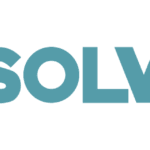As the fragile but still-in-place Israel-Hamas ceasefire nears the two-month mark, and with the Houthis declaring an end to attacks on passing vessels, there is more and more anticipation that the long-awaited return of container traffic to the Red Sea may be coming soon.
Though Maersk maintains it has not set a date, the Suez Canal Authority stated that Maersk will resume transits in early December. ZIM’s CEO recently stated that a return in the near future is increasingly likely, and CMA CGM is reportedly preparing for a full return in December.
Operational Impact
The shift of most of the 30% of global container volumes that normally transit the Suez Canal away from the Red Sea and around the Cape of Good Hope almost exactly two years ago added seven to ten days and thousands of nautical miles to Asia – Europe journeys and to some Asia – N. America sailings as well.
The return of container traffic to the shorter Suez route will result in the sudden early arrival of these ships, which will mean significant vessel bunching and congestion at already persistently congested European hubs. This congestion will cause delays and absorb capacity which could push container rates up on the affected lanes, and possibly beyond.
The shift back through the Suez Canal may initially keep some of the typically lower volume ports in Europe that have become transhipment centers during the Red Sea crisis, like Barcelona, busy while carriers may omit port calls at some of the congested major hubs. But after the unwind, these ports, as well as African ports that have been used as refuelling stops during the last two years, will see port calls decline.
Carriers have plans for a gradual phase in of the transition back to the Red Sea, with smaller vessels starting to transit first. This approach would still cause vessel bunching, but would be aimed at minimizing the impact of the reset as much as possible.
But some carriers are skeptical that an orderly phase-in will happen, as they expect pressure from customers who will want a return to the shorter route as quickly as possible. Analysis from Sea Intelligence suggests that the more gradual the transition, the less disruptive it will be, while the faster the return the more disruptive it will be during the up to two months it will take for schedules to return to normal.
Ocean expert Lars Jensen also notes that a return during the lead up to Lunar New Year would coincide with an increase in demand, and would put more pressure on ports and rates than if the transition takes place post-LNY when demand is typically weak. With carriers signalling the shift will begin in December and pre-LNY demand probably picking up in mid-January next year, it seems likely the two will coincide.
Implications for Capacity – and Rates
Red Sea diversions were estimated to have absorbed about 9% of global container capacity by keeping ships at sea for longer and – with longer journeys meaning vessels would arrive back at origins days behind schedule – via carriers adding extra vessels to services in order to maintain planned weekly departures.
This drain on capacity caused Asia – Europe rates to more than triple and transpacific rates to more than double in the two months from the time the diversions began to just before Lunar New Year of 2024. And though rates moved up and down along with seasonal changes in demand, the capacity drain pushed East-West rates up to 2024 highs of $8,000 – $10,000/FEU and set a highly elevated floor of $3,000 – $5,000/FEU during low demand periods that year.
But even with Red Sea diversions continuing to absorb capacity in 2025, continued fleet growth through newly built vessels entering the market has meant that the container trade has already become significantly oversupplied.
As such, rates on these lanes – even before the capacity absorbed by diversions has re-entered the market – have consistently been significantly lower than in 2024 even during months when volumes have been stronger, with prices on some lanes reaching 2023 levels for a span in early October. Recent carrier struggles maintaining transpacific GRIs point to this challenge already.
Even with Red Sea diversions continuing and even during months in 2025 with stronger year on year volumes, capacity growth has meant rates in 2025 have been lower than in 2024.
Yes, the initial congestion and delays caused by the transition back to the Suez Canal will at first put upward pressure on rates for Asia-Europe containers and probably to a lesser degree on the transatlantic lanes as well. If the congestion ties up enough capacity or impacts operations at Far East origins, the rate impact could spread to the transpacific as well. As noted above, if the return coincides with the lead-up to LNY, it will have a stronger impact on rates as there will be pressure from the demand side as well.
But once the congestion unwinds and container flows and schedules stabilize the shift will ultimately release more than two million TEU of container capacity back into the market. This surge will put even more downward pressure on rates and increase the challenge of effectively managing capacity for carriers seeking to keep vessels full and rates profitable in 2026.














